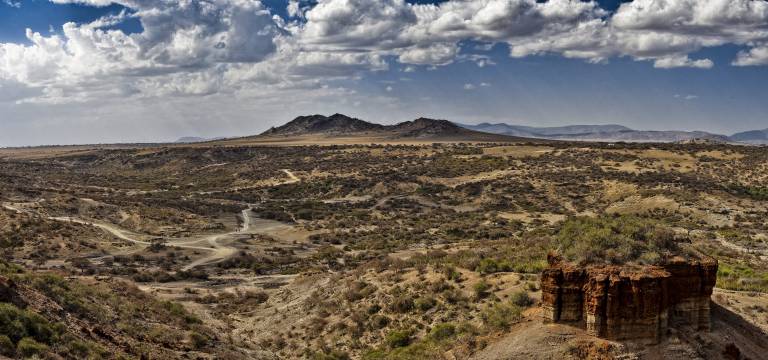Earliest Acheulian paleolandscape reveals a 1.7 million-year-old megasite at Olduvai Gorge
19 August 2023
• The HWK-FLK West complex (1.7 Ma, Olduvai Gorge) shows an alluvial habitat with a continuous concentration of archaeological debris over a large area (about 1 km). • This resulted from the redundant use of that portion of the landscape by hominins.

FLK West (Bed II, Olduvai Gorge) contains the oldest association of Acheulian stone tools and exploitation of fauna (including megafauna) by hominins in the Pleistocene. Recently, the FLK West paleolandscape has been intensively studied, unveiling a spatial association between archaeological materials and hydrothermal resources. A new type of landscape use by hominins has also been documented around the area where the pene-contemporaneous FLK West and HWK site complex were formed, resulting in an array of habitats spanning thousands of square meters covered with large amounts of lithic artefacts. Here, we show how the intensive use of certain environments by hominins resulted in these “megasites”, in which hominins engaged in a variety of activities, complementary to those performed at discrete archaeological clusters like FLK West. Despite using these habitats redundantly as quarries, hominins performed extensive core reduction of several types of raw materials indicating a dexterity and careful planning undocumented in earlier periods. Here, we also show how palaeoecological reconstructions must be based on fine-scale geological analyses, given the palimpsestic nature of both geological and anthropogenic processes. The research reported here also uncovered an additional unknown source of metamorphic rocks for hominins at Olduvai, which questions a large part of previous modeling based on hominin provisioning exclusively at Naibor Soit. We also show that the manufacture of handaxes was slightly older than documented at FLK West and that they occur in isolation on the landscape in addition to being clustered at sites. This implies that at the beginning of the Acheulian, hominins were not only using and discarding handaxes at specific loci, but they also transported these tools for various activities across the landscape as part of their strategized adaptation to those environments. The occurrence of these intensively-used megasites hints at some territorial behaviors by early Acheulian hominins.
Earliest Acheulian paleolandscape reveals a 1.7 million-year-old megasite at Olduvai Gorge (Tanzania)
M. Domínguez-Rodrigo, D. Uribelarrea, F. Diez-Martín, Mabulla A, A. Gidna, L. Cobo-Sánchez, D.M. Martín-Perea, E. Organista, R. Barba, E. Baquedano
 Close
Close

